Up to this point, we’ve explained the difference in performance between entry level, poorly designed and premium car audio amplifiers. We hope you’ve found this informative, and now it’s time we took a close look at car audio speakers. No car audio component is more crucial than speakers for reproducing music with accuracy and clarity.
This series of articles will analyze the impedance, frequency response, output capability and distortion characteristics of different car audio speakers. The goal is to give those of you who want to upgrade the clarity and performance of your audio system a clear correlation between design features, specifications and, ultimately, performance.
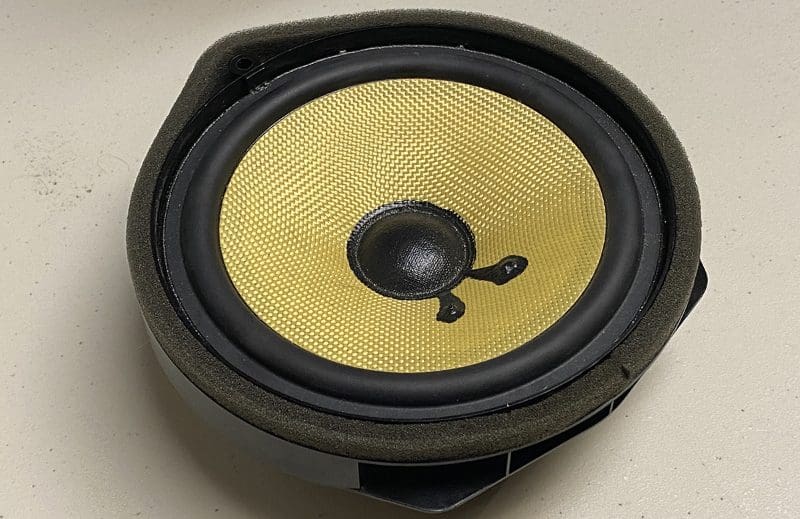
Factory-Installed Honda Civic Speaker
I have a set of door speakers from a Honda Civic for our first subject. This is a woofer (no tweeter) with an effective cone diameter of 125.5 millimeters measured from the middle of the surround on one side of the driver to the center on the other side. The cone is made from a woven yellow fiber which could be of glass or aramid composition. The dust cap is formed from soft textile but is much less rigid. The speaker has a rubber surround, which lasts longer than foam.
Mechanically, the speaker has a relatively small-diameter flat linear spider bonded to a 1-inch voice coil former. There’s no cooling vent on the rear of the magnet or venting under the spider mounting ledge. The basket is formed from injection-molded, glass fiber-reinforced polycarbonate and has six deeply reinforced spokes. As is typical for an OEM speaker, the mounting flange includes a built-in spacer with an integrated gasket that will bring the speaker out near the grille in the interior door trim panel. Overall, aside from a small voice coil and lack of cooling technologies, the design offers nothing of significance to complain about.
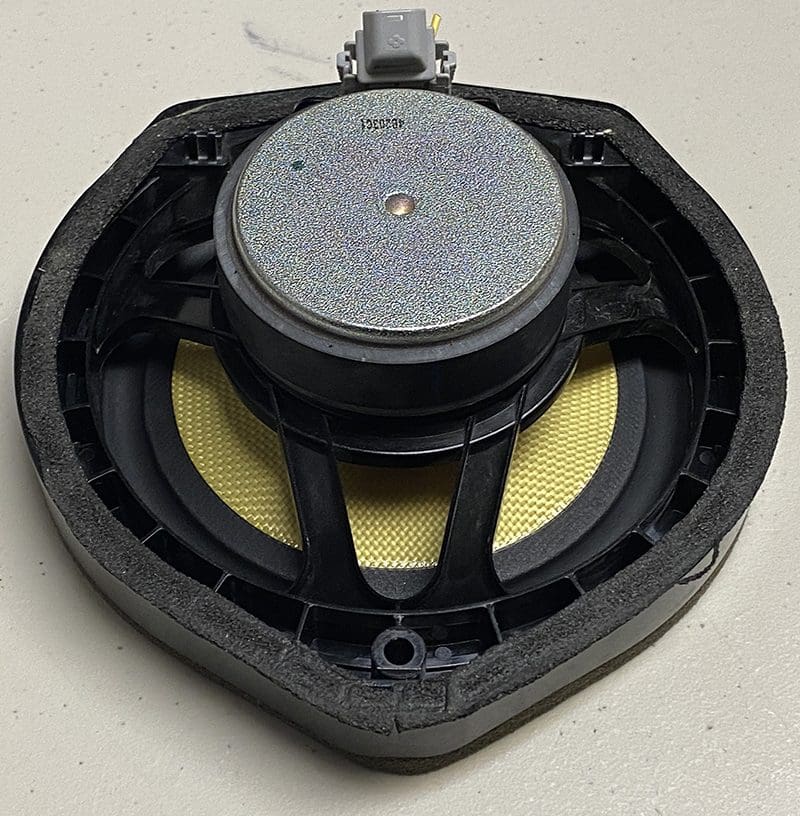
Measuring Thiele/Small Parameters
Every speaker of every size can have its low-frequency characteristics modeled by a set of measurements and values summarized as Thiele/Small parameters. These measurements can be used with enclosure simulation software to predict how the driver will behave in an enclosure.
The Thiele/Small parameters quantify the driver’s suspension compliance, resonant frequency, mechanical Q, electrical Q and motor force. The information does not describe any nonlinearities in the suspension or magnetic fields or the excursion limits of the design. Far too many amateur audio enthusiasts think you can quantify the low-frequency sound quality of a speaker using enclosure simulation with Thiele/Small parameters. You can’t.
I’ll use my Clio Pocket with the added mass process to measure this information for the Honda speaker.
Is there anything we can discern in terms of performance from the measured Thiele/Small parameters? The first thing we see is that the driver has a relatively high total Q (Qts) of 0.69. This will add a little resonant bump in output in the lower midbass region. It’s likely a good design trade-off for a speaker designed to be used without a subwoofer, as it will add a touch of warmth to the sound. However, in absolute terms, this will be a bit of unwanted distortion. Lastly, the predicted efficiency is relatively high at 89.04 dB SPL when driven with 1 watt of power and measured at 1 meter. This is also normal for an OEM speaker as they trade low-frequency output for increased output at higher frequencies. The ~10-gram moving mass supports this theory.
Let’s look at what the BassBox Pro enclosure simulation software predicts this driver will do in our 3-cubic-foot test enclosures. I chose this volume as it’s typically large enough to have minimal effect on the driver’s performance and should simulate how the speaker will behave in a door or rear parcel shelf.
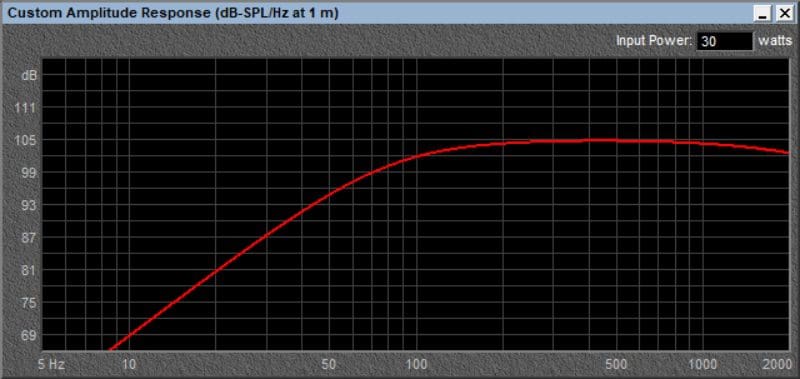
As you can see from the graph above, this is more of a midrange driver than a woofer. I guessed at the 30-watt power handling based on the diminutive size of the voice coil and lack of cooling features. In terms of predictions, the driver has a -3 dB frequency of 98 hertz and would greatly benefit from being used with a subwoofer.
Measuring Driver Impedance
Part of measuring Thiele/Small parameters is to make a series of impedance sweeps. Impedance is the opposition to the flow of alternating current (AC) signals. As you can see from the graph below, the driver has a fairly tall, narrow peak around its resonant frequency of 74.7 hertz. You can also see the increase in inductance at higher frequencies as the upward trend to the right.
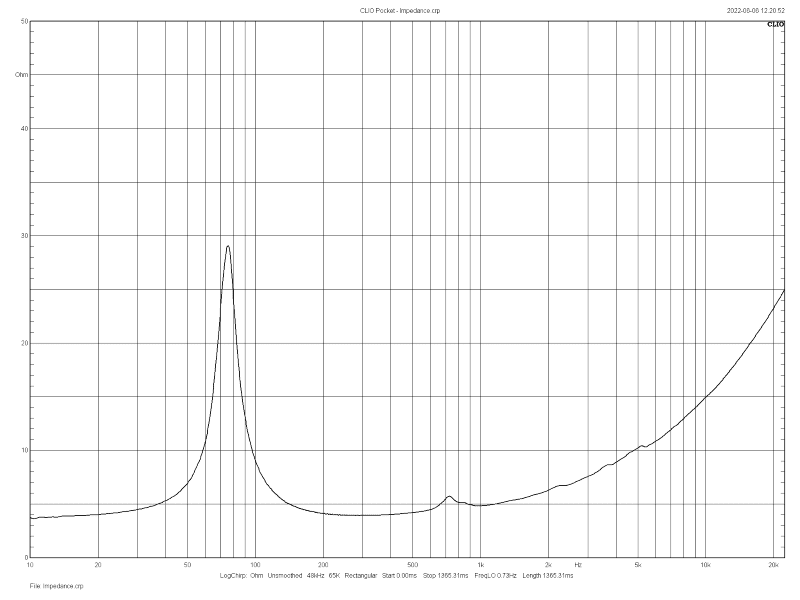
We can see something else in this graph. Something has caused a noticeable resonant peak at about 700 to 800 Hz, and there are additional wiggles in the response at 2.4, 3.7 and 5.2 kHz. These are likely caused by the cone, dust cap or surround resonating. We’ll see if any of these translate into quantifiable distortion in the acoustic measurements.
Speaker Acoustic Measurements
With the driver loaded into my 3-cubic-foot test enclosure, I placed it on the floor of my lab. The microphone from the Clio Pocket is 1 yard above the top edge of the cone, where it meets the surround. We’ll use this position for all speakers going forward. We’ll begin the testing by taking frequency response measurements at increasing drive levels. While there is no specific standard, we’ll clone what Vance Dickason uses in his transducer tests in Voice Coil magazine with 0.3, 1, 3, 6, 10 and 15 volts. It’s doubtful that the driver will remain linear in output at the 10- and 15-volt levels as those values equate to 25 and 56 watts of power into a 4-ohm load. I will add a 2-volt measurement that equates to 1 watt into a 4-ohm load.
Before we get into the analysis of the speaker, we need to understand a few things about the measurements. First, the information below 30 Hz can be ignored. There is no output of 100 dB SPL at 10 Hz. Second, the dip at 130 Hz is a reflection in the room. It can be ignored as well. We know this is an acoustic cancellation because there is no dip or peak in the impedance or distortion curves. Sorry, I don’t happen to have an anechoic chamber at my disposal. In the meantime, I’ll continue to purchase lottery tickets!
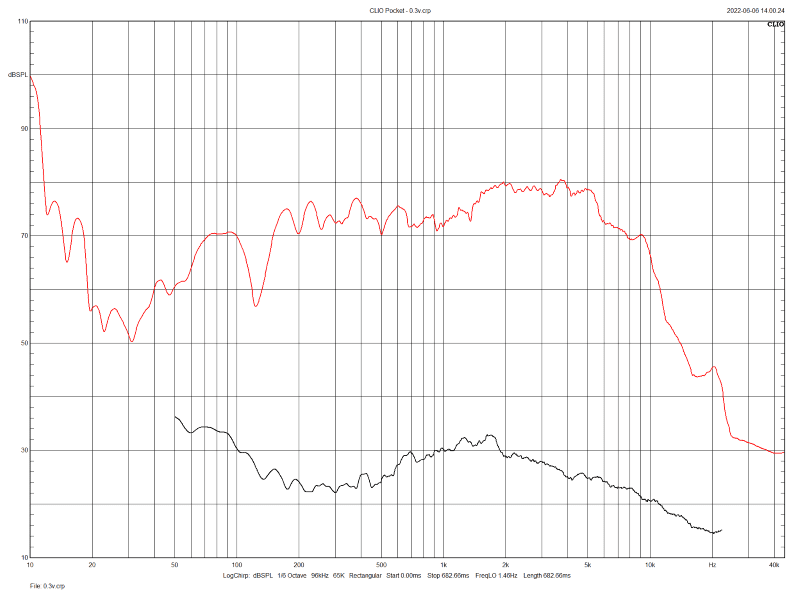
Well, here’s our first look at the Honda speaker. From 160 Hz through to 1.5 kHz, the response is adequately flat given the non-anechoic characteristics of my lab. From 1.5 through to 5.5 kHz, there is a bump in the output of about 6 dB.
The black trace lower in the graph is the total harmonic distortion (THD) measured by the Clio. Let’s look at a few frequencies and make some percentage distortion calculations. From 200 through to 400 Hz, the harmonic distortion is -49 dB, equating to 0.35% THD. At 80 Hz, distortion is at 1.5%, and the significant bump in distortion around 1.3 kHz represents approximately 0.89% distortion.
Let’s sweep it again with a little more voltage – this time, the signal generator is set to 1 volt RMS.
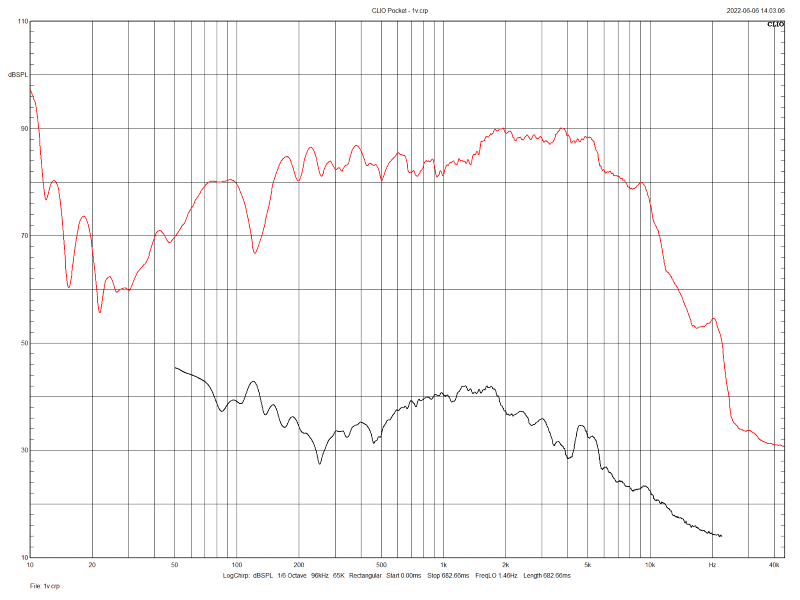
The first thing to observe at this higher drive level is that the output increases linearly. All frequencies are roughly 10 dB louder. This is good because neither the suspension compliance nor the motor force has become a limiting factor. Something is happening up at 4.5 kHz that’s caused a bump in the distortion curve. Overall, though, it’s not too bad for this roughly 0.25-watt playback level.
Let’s bump things up to 3 volts.
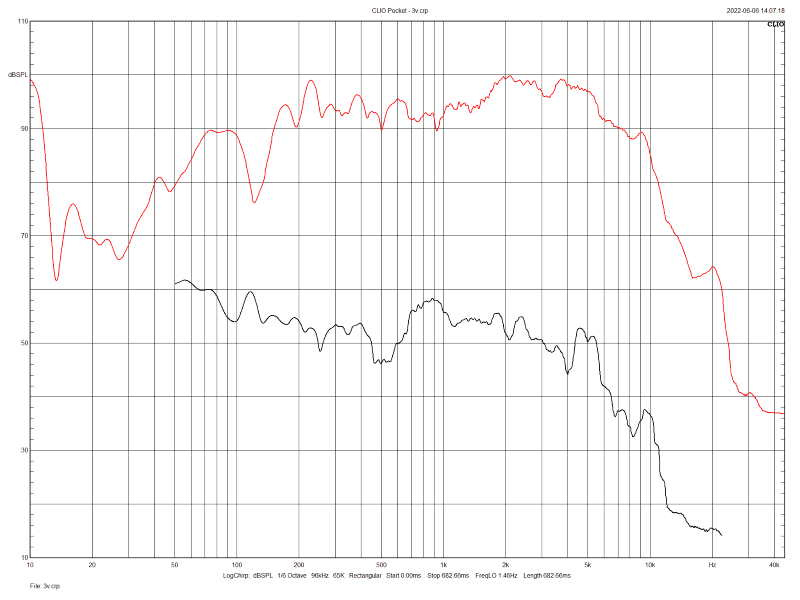
In terms of frequency response, things remain nice and linear. All frequencies are once again about 10 dB louder. What isn’t so good is the harmonic distortion characteristics. A bump appears between 700 and 900 Hz at almost 2% distortion. This would be audible if not buried with other audio information. Distortion in the bass frequencies, 70 Hz, is over 3%. This 3-volt drive level equates to roughly 2.25 watts of power for a nominal 4-ohm speaker.
OK, how about 6 volts from the function generator for the next sweep?
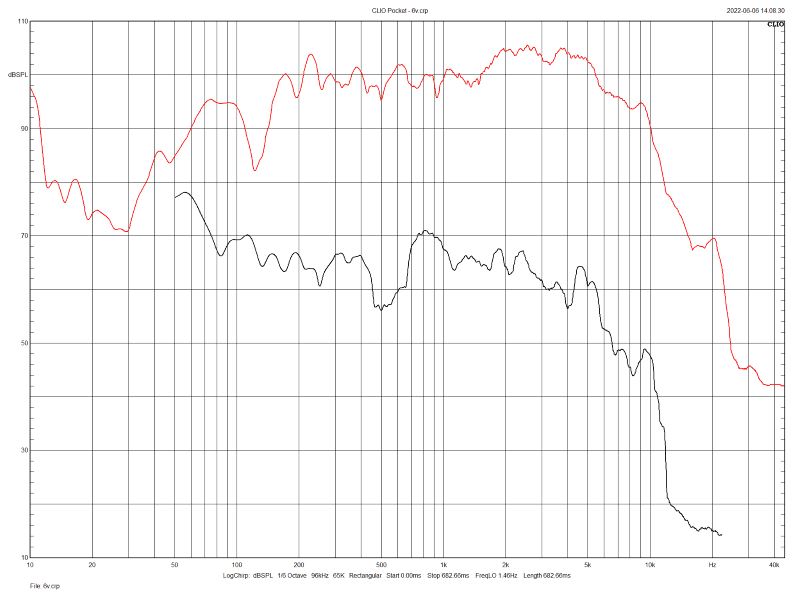
A drive level of 6 volts is roughly 9 watts of power into a 4-ohm load. The graph above shows that distortion at all frequencies has increased by more than the increase in fundamental output. For example, when driven with 3 volts at 900 Hz, the THD was around 2%. Now, with 6 volts, the distortion has increased to 3%. Remember that bump we saw in the impedance graph around 800 Hz? Well, now it’s back as a peak in the distortion graph. You’d be surprised what you can learn from impedance graphs.
Last but not least, let’s feed this driver with a 10-volt sweep that equates to about 25 watts of power.
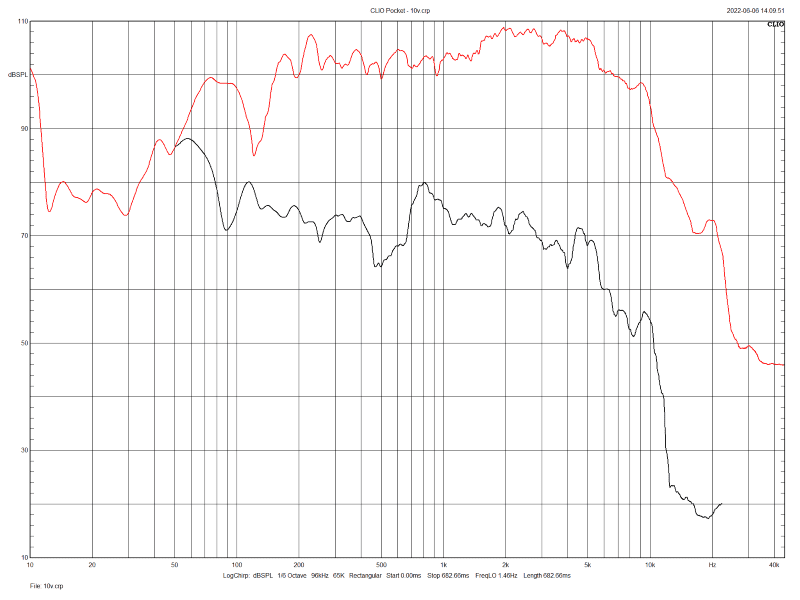
Though we only picked up about 3 dB more output, the distortion has increased significantly. We have 7% distortion at 800 Hz and over 3.5% at 200 Hz. If we look down in the bass region, 80 Hz is at about 10% total harmonic distortion. In short, this speaker would sound pretty bad when driven with much more than 10 to 15 watts of power and would be screaming at 25 watts.
Better Speakers Offer Better Performance
In terms of establishing a foundation for our measurements and speaker comparisons, we’ll stop here. This article will serve as a benchmark for what looked like a reasonable quality OEM speaker. We’ll test some speakers that might be better and some that might be worse over the next few months. This information should allow us to develop a correlation between design features and performance. In the meantime, if you’re shopping for new car audio speakers, drop by your local specialty mobile enhancement retailer to audition some options for your vehicle.
This article is written and produced by the team at www.BestCarAudio.com. Reproduction or use of any kind is prohibited without the express written permission of 1sixty8 media.
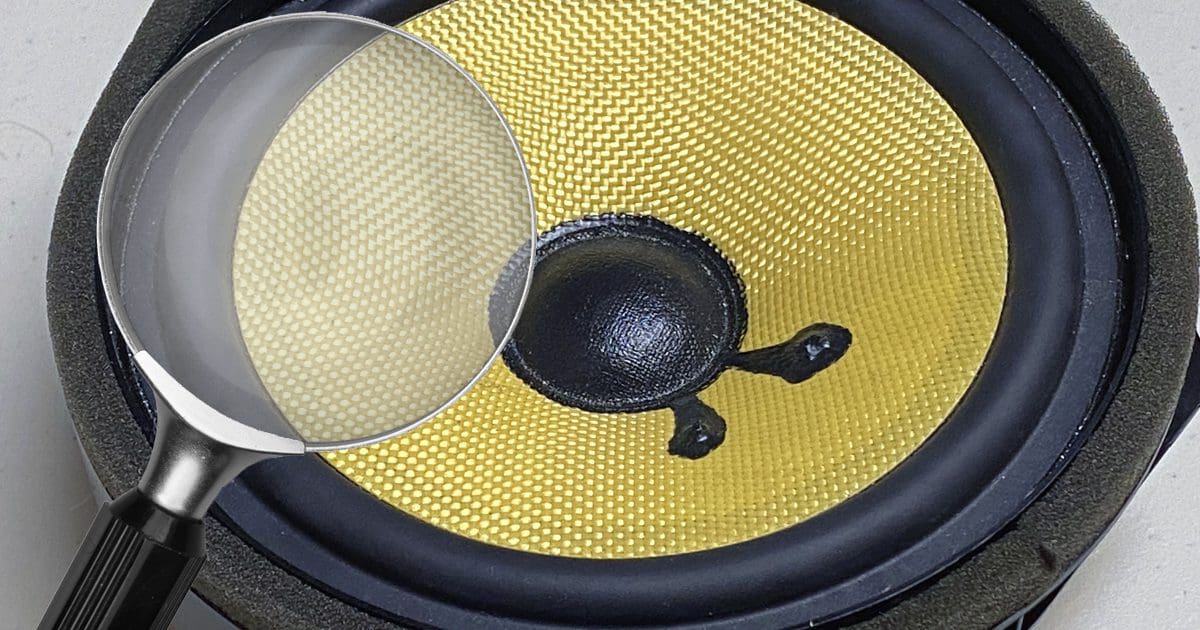
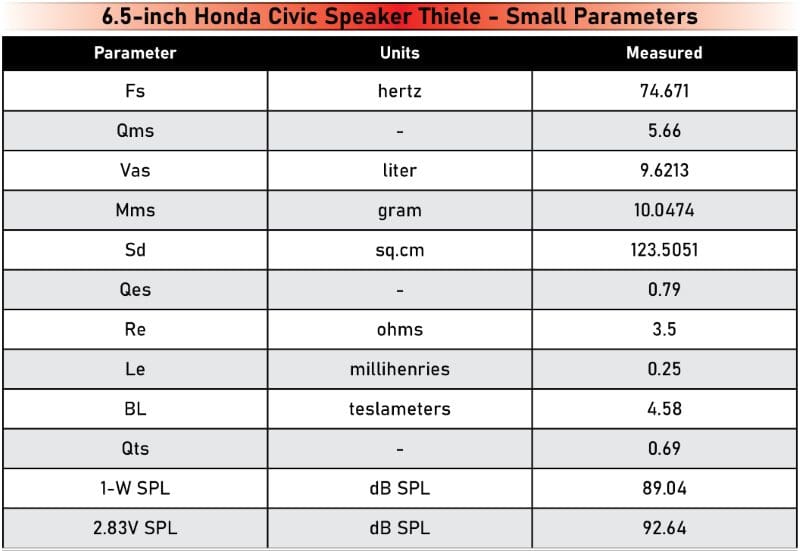
Leave a Reply